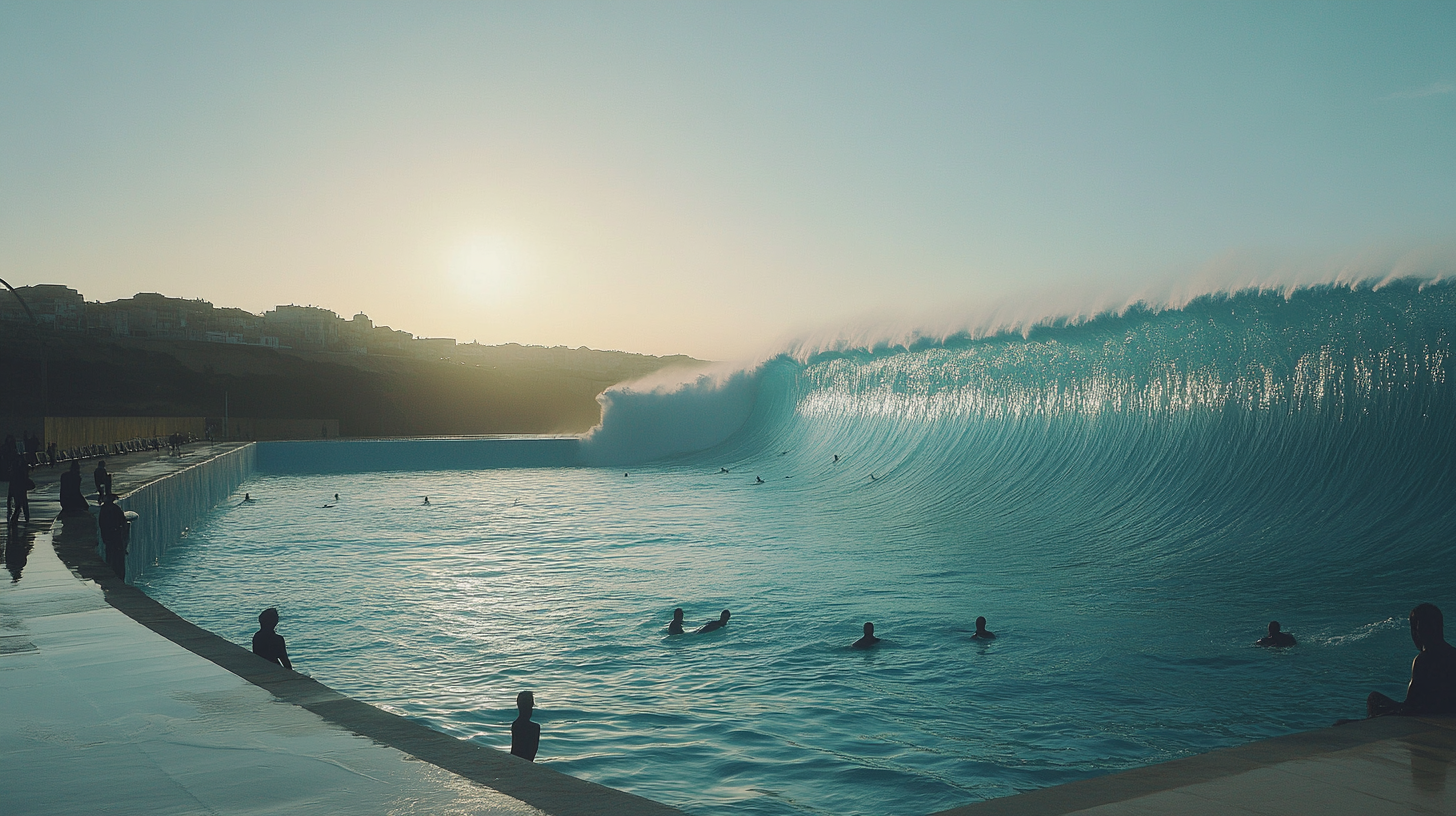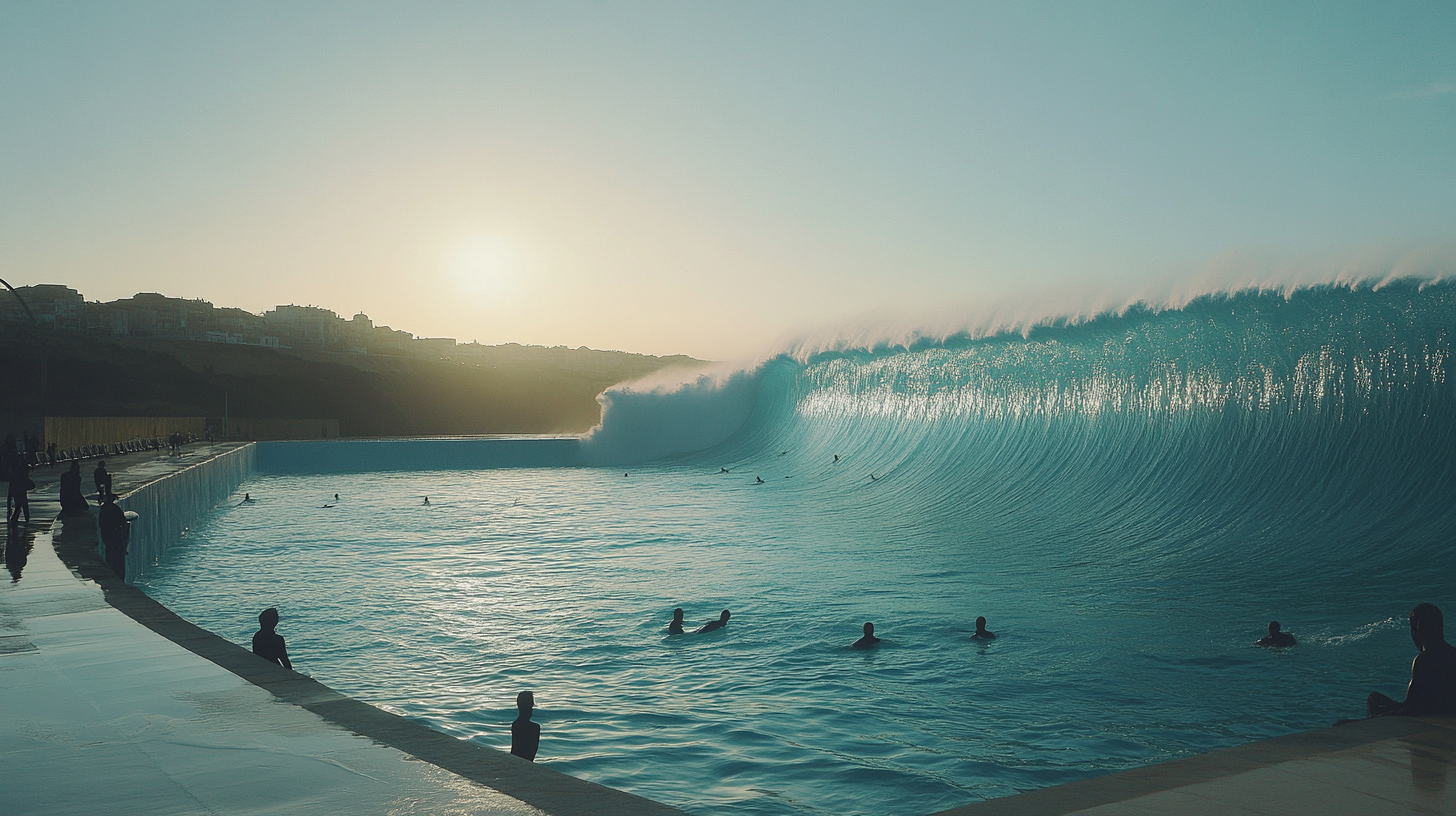

Understanding the video content
When encountering an embedded YouTube video without any accompanying text or article, it can be challenging to grasp the full context or message of the content. Videos often contain valuable information, but without a written summary or transcript, viewers may miss out on key points, especially if they are unable to watch the video in its entirety. For surfers, this could mean missing out on important tips, techniques, or insights that could enhance their performance or understanding of the sport.
Understanding the content of a video is crucial, particularly when it comes to instructional or educational material. Surfing videos, for example, often include demonstrations of techniques, breakdowns of wave conditions, or interviews with professional surfers. Without a clear explanation or written guide, it can be difficult to follow along or revisit specific sections of the video for further clarification. This is where a transcript or summary becomes incredibly useful, as it allows viewers to quickly reference the key points without having to rewatch the entire video.
For Australian surfers, who are often looking for localised content that speaks to their unique conditions and challenges, having a clear understanding of the video’s content can make a significant difference. Whether it’s learning how to navigate the powerful waves of the Gold Coast or understanding the best times to surf in Western Australia, having access to a detailed breakdown of the video can help surfers apply the information more effectively to their own experiences.
How to provide a transcript or summary
Providing a transcript or summary of a video is a straightforward yet highly effective way to ensure that the content is accessible to a wider audience. A transcript is essentially a word-for-word written version of the video’s audio, while a summary condenses the main points into a shorter, more digestible format. Both options have their benefits, and the choice between them often depends on the purpose and the audience’s needs.
For surfers, a transcript can be particularly useful when the video contains detailed instructions or technical jargon. For example, if a video is explaining how to perform a specific manoeuvre like a cutback or bottom turn, having the exact wording written out can help surfers follow along more easily. They can refer back to the transcript while practising the move, ensuring they don’t miss any crucial steps. Additionally, transcripts are helpful for those who may have hearing impairments or prefer reading over watching videos.
On the other hand, a summary is ideal when the video covers broader topics or when viewers are short on time. A well-written summary can highlight the key takeaways, such as the best surf spots in Australia, tips for improving balance on the board, or insights from pro surfers on how to handle different wave conditions. For Australian surfers, a summary might focus on region-specific advice, like how to handle the unpredictable swells of Bells Beach or the best times of year to surf in Byron Bay. This allows surfers to quickly absorb the most relevant information without having to watch the entire video.
To create a transcript, you can either manually transcribe the audio by listening to the video and typing out the dialogue, or you can use automated transcription tools. Many platforms, including YouTube, offer auto-generated captions, which can be a good starting point. However, it’s important to review and edit these captions for accuracy, especially when it comes to surfing terminology, which may not always be correctly interpreted by automated systems.
For a summary, the process is more about distilling the essence of the video. Start by watching the video in full, taking note of the main points, key moments, and any specific advice or tips that stand out. Then, condense this information into a few concise paragraphs, ensuring that the most important details are included. For example, if the video is about surfboard selection, your summary might focus on the different types of boards recommended for various Australian surf conditions, such as shortboards for the fast, hollow waves of Snapper Rocks or longboards for the mellow breaks of Noosa Heads.
Whether you choose to provide a transcript or a summary, the goal is to make the video content more accessible and easier to engage with. For surfers, this means they can spend less time searching for information and more time out on the water, applying what they’ve learned to improve their skills and enjoy the waves.
Assistance with rewriting or rephrasing
When it comes to rewriting or rephrasing content, the goal is to maintain the original meaning while presenting the information in a new, fresh way. This can be particularly useful for surfers who may have already encountered similar advice or tips but are looking for a different perspective or a clearer explanation. Rewriting can also help make the content more engaging or tailored to a specific audience, such as Australian surfers who face unique wave conditions and surf culture compared to other parts of the world.
For example, if a video discusses how to read wave patterns, the original content might focus on general principles that apply globally. However, when rewriting for an Australian audience, you could rephrase the information to include specific references to local surf spots, like the long, peeling waves of Kirra or the powerful breaks at Margaret River. This not only makes the content more relatable but also more practical for surfers who are navigating these particular conditions.
Rephrasing can also help simplify complex information. Surfing techniques, such as performing an aerial or mastering a tube ride, can be difficult to explain in technical terms. By rewording the instructions in a more straightforward or conversational tone, you can make the content more accessible to surfers at different skill levels. For instance, instead of using jargon-heavy language, you might break down the steps of a manoeuvre into easy-to-follow actions, ensuring that even beginners can grasp the concept.
Another benefit of rewriting is that it allows you to inject a bit of personality or local flavour into the content. Australian surf culture is distinct, with its laid-back vibe, strong community ties, and deep connection to the ocean. When rephrasing content, you can incorporate this cultural context, making the advice feel more relevant and engaging. For instance, instead of simply stating that surfers should “stay relaxed on the board,” you could rephrase it to something like, “Keep it cruisy, mate—stay loose and let the board do the work, just like you would on a mellow day at Bondi.”
Additionally, rewriting can help clarify any confusing or ambiguous points in the original content. Surfing videos, especially those created by international surfers, may not always account for the specific challenges faced by Australian surfers, such as dealing with strong rips or navigating crowded lineups at popular beaches. By rephrasing the content, you can address these local concerns, offering more practical advice that resonates with the audience. For example, if the original video talks about avoiding crowded surf spots, you could rephrase it to include tips on finding quieter breaks along the NSW South Coast or timing your sessions to avoid the peak crowds at Manly Beach.
Ultimately, rewriting or rephrasing content is about making it more relevant, engaging, and accessible to the target audience. For Australian surfers, this means adapting the information to suit their unique conditions, surf spots, and culture, ensuring that they can apply the advice in a way that enhances their experience in the water.
Video content overview
Alright, mate, so what we’ve got here is a video link, but no text to go with it. Now, I can’t exactly dive into the video and pull out the words for you, but if you give me a rundown of what’s happening in the clip, I can help you shape it into something that’ll make sense for the rest of us. Whether it’s a gnarly surf session, a fishing trip gone right (or wrong), or some wild adventure, I’m all ears. Just throw me a bone with a summary or transcript, and we’ll get it sorted quicker than a roo on the hop.
For now, though, it’s just a video sitting there, waiting for someone to give it a bit of context. So, if you’re keen to get that sorted, let’s crack on!
How to proceed with video summaries
Alright, so you’ve got a video, but no time to sit down and write out a full transcript? No worries, mate. Here’s how we can tackle it. First off, give the video a quick watch and jot down the key moments. You don’t need to go overboard—just the highlights will do. Think about the stuff that’ll get your mates talking: the big wave, the monster fish, or that epic wipeout. Once you’ve got those down, we can turn it into a tidy little summary that’ll keep everyone hooked.
If you’re feeling extra keen, you can break it down into sections. Maybe the first part’s all about setting up the scene—where you are, what the conditions are like. Then, move into the action. What’s happening? Who’s involved? And don’t forget to throw in a bit of colour—what’s the vibe? Is it a laid-back day on the water, or are things getting a bit hectic? Finally, wrap it up with the outcome. Did you land the fish? Did you make the wave? Or did it all go pear-shaped? Either way, we’ll make it sound like a yarn worth telling.
If you’re not up for writing it all out, you can even just give me the timestamps for the key moments, and I’ll help you flesh it out. Easy as. Whether it’s a 30-second clip or a full-blown adventure, we’ll get it sorted so you can share the stoke with your mates.

